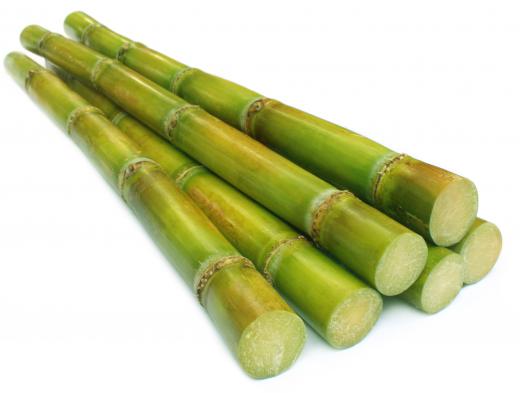Many raw materials make up the ingredients for making paper, and common paper-making materials include grass, straw, and wood. The by-product pulp from sugar beets and sugar cane can also be used.Attempting to reduce waste, some paper manufacturers use paper products and textiles. The fibers in these raw materials are held together with a binder to produce the paper. Paper manufacturers can obtain raw materials for paper from any number of places, including lumberyards, sugar processing plants and companies that collect paper and textiles for recycling.
The length of the cellulose fibers in plant material determines the type of paper that can be made from that fiber. Raw materials for paper that have long fibers generally produce a stronger, thicker product. Wood from cone bearing trees, including fir, pine, and spruce, typically have these long fibers. Old magazines, newspapers, and other previously used paper products generally have shorter fibers.

When the raw materials consist of wood, bark must be removed and the lumber must be reduced in size. Machines typically chip or shred the wood into smaller particles. Once reduced into a workable product, the material is ground against a rotating stone and exposed to water. Manufacturers may also use a chemical process in which a sulfur solution dissolves the wood into a fibrous pulp. Plant or textile materials are then cooked.

Besides reducing textiles or waste paper products in size by shredding or other mechanical means, manufacturers using raw materials for paper, generally remove any dyes and inks in the material. Factories often accomplish this task by washing and rinsing the fragments. Manufacturers sometimes expose the pulp solution to a mild bleaching process, converting the product to the desired color. They then spray or otherwise apply the pulp in thin layers onto porous surfaces. Subjected to air and pressure, the pulp dries, forming paper.

Papermaking plants typically produce over 1,000 tons of pulp daily. Producing approximately one ton of pulp from wood requires 10 to 17 trees. This amount of pulp creates enough paper to print around 7,000 newspapers. Approximately one third of the raw materials for paper in the United States are waste paper products.
The Chinese, sometime in the first century AD, were the first people to use raw materials for paper. The craft eventually spread throughout Asia and into Egypt, where bark, hemp, and rags served as raw material. The first paper mills developed in Spain around the middle of the 12th century, and the paper-making process spread throughout Europe around the 15th century. Grinding wood into a pulp to make paper began only around the middle of the 19th century, however.
